
Chapter 1 - Music Fundamentals
Aspects of Sound
Aspects of sound - Properties that are fundamental to the elements of sound and music.
Sound has:
Pitch (Frequency) - Wavelength
Dynamic (Amplitude) - Wave height
Timbre (Tone color) - Waveform
Articulation - Envelope
Duration - The length of time sound and silence last.
Pitch-Frequency-Wavelength
Wavelength - The distance between one wave and the next. It’s related to the frequency and the pitch.
Frequency - The rate of vibration measured in times per second or Hertz.
The higher the frequency, the higher the pitch and the shorter the wavelength.
Dynamics-Amplitude-Wave Height
Height - The size of each individual wave
Amplitude - The length of the wave. It determines the loudness of the sound.
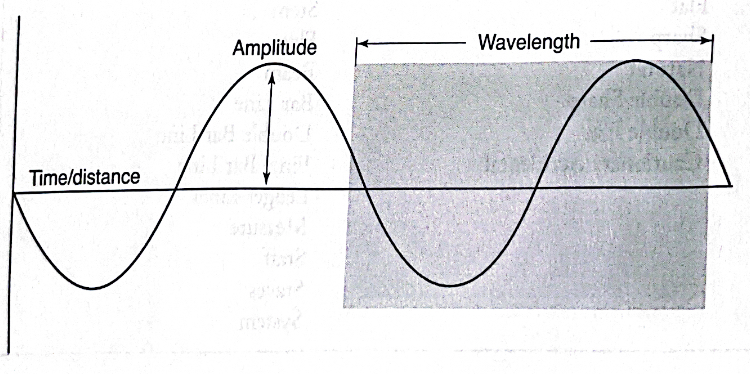
Timbre-Tone Color-Waveform
Waveform - The shape and form of the sound wave as it moves in distance and frequency.
Timbre - Unique qualities of sound produces by the shape of the waveform.
They’re made up of more than one frequency, involving harmonics or overtones.
Articulation-Envelope
Envelope - Composed of a sound’s attack, sustain, and release.
Articulation - The manner in which we begin the note, sustain it, and end the note.
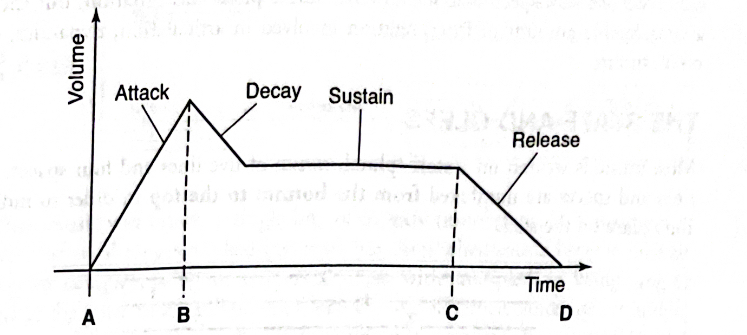
Duration
Duration - The length of time sound and silence last.
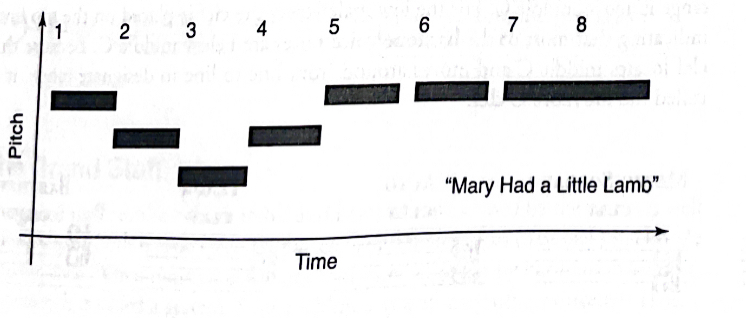
The Staff and Clefs
Staf (Staves) - Where most music is written. A space of five lines and four spaces.
Lines and spaces are numbered from bottom to top.
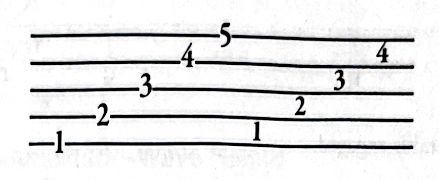
Clefs - What determines the names of the lines and spaces used.
Soprano
Mezzo soprano
Alto
Tenor
Baritone
C clef - Sign used for all of the previously mentioned vocal ranges.

Movable C clef - The clef that locates middle C and moves around from line to line to designate range.
Alto clef - When the C clef is placed on the third line of the staff.
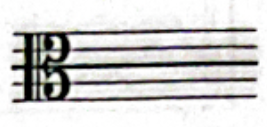
Tenor clef - When the C clef is placed on the fourth line of the staff.
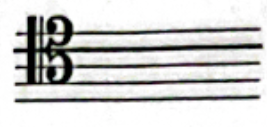
Treble clef - When the G clef is placed on the second line of the staff.

Bass clef - When the F clef is placed on the fourth line of the staff.

The Grand Staff
Grand staff - A system of two staves - the top staff uses the treble clef and the bottom staff uses the bass clef.
System - When multiple staves are connected together by bar lines, brackets, or a brace.
Neutral clef - Used for rhythm only or for pitchless or untuned instruments such as triangle, cymbals, or tambourine.
Accidentals
Ledger lines - Small lines that extend the staff while still keeping the five lines and four spaces intact.
Half step - The smallest space or distance between notes.
Sharp - Raises the pitch one half step above its natural pitch.
Flat - Lowers the pitch one half step below its natural pitch.
Enharmonic equivalent - When notes sound the same but are named differently.
Natural - The musical symbol that cancels out a flat or a sharp.
Double sharp - Musical symbol used to raise a pitch by two half steps.
Double flat - Musical symbol that lowers the pitch by two half steps.
Notation
Parts of a musical note
Head
Stem
Flag
Beam
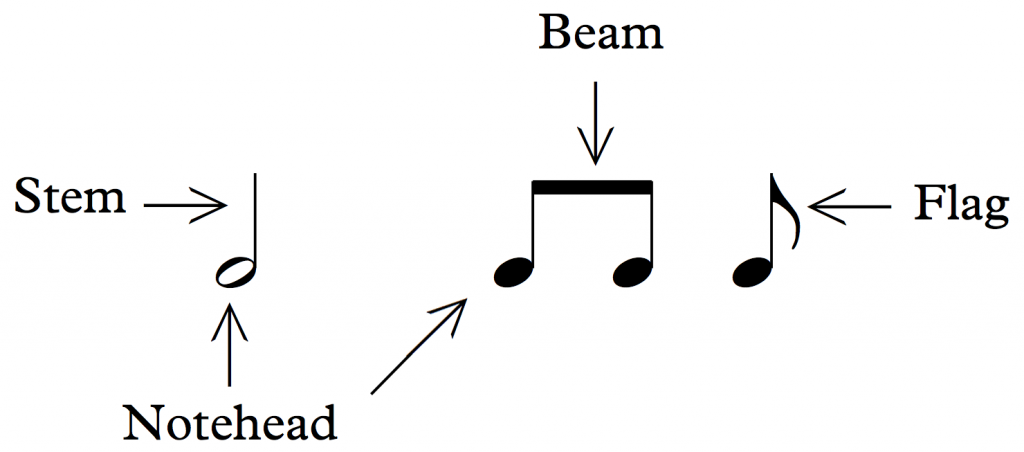
Note head - Body of the note
Stem - Part of a note that is common to all note types shorter in duration than the whole note.
Flag - Part of the note that is common to all note types shorter in duration than a quarter note.
More flags = Shorter note
Music notation symbols
Bar line - The vertical line that divides the staff into measures.
Measure - The unit of space between the bar lines.
Double bar line - Two lines that signal the end of a section of music.
Final bar line - Indicates the end of the piece or composition.
Chapter 1 - Music Fundamentals
Aspects of Sound
Aspects of sound - Properties that are fundamental to the elements of sound and music.
Sound has:
Pitch (Frequency) - Wavelength
Dynamic (Amplitude) - Wave height
Timbre (Tone color) - Waveform
Articulation - Envelope
Duration - The length of time sound and silence last.
Pitch-Frequency-Wavelength
Wavelength - The distance between one wave and the next. It’s related to the frequency and the pitch.
Frequency - The rate of vibration measured in times per second or Hertz.
The higher the frequency, the higher the pitch and the shorter the wavelength.
Dynamics-Amplitude-Wave Height
Height - The size of each individual wave
Amplitude - The length of the wave. It determines the loudness of the sound.

Timbre-Tone Color-Waveform
Waveform - The shape and form of the sound wave as it moves in distance and frequency.
Timbre - Unique qualities of sound produces by the shape of the waveform.
They’re made up of more than one frequency, involving harmonics or overtones.
Articulation-Envelope
Envelope - Composed of a sound’s attack, sustain, and release.
Articulation - The manner in which we begin the note, sustain it, and end the note.

Duration
Duration - The length of time sound and silence last.

The Staff and Clefs
Staf (Staves) - Where most music is written. A space of five lines and four spaces.
Lines and spaces are numbered from bottom to top.

Clefs - What determines the names of the lines and spaces used.
Soprano
Mezzo soprano
Alto
Tenor
Baritone
C clef - Sign used for all of the previously mentioned vocal ranges.

Movable C clef - The clef that locates middle C and moves around from line to line to designate range.
Alto clef - When the C clef is placed on the third line of the staff.

Tenor clef - When the C clef is placed on the fourth line of the staff.

Treble clef - When the G clef is placed on the second line of the staff.

Bass clef - When the F clef is placed on the fourth line of the staff.

The Grand Staff
Grand staff - A system of two staves - the top staff uses the treble clef and the bottom staff uses the bass clef.
System - When multiple staves are connected together by bar lines, brackets, or a brace.
Neutral clef - Used for rhythm only or for pitchless or untuned instruments such as triangle, cymbals, or tambourine.
Accidentals
Ledger lines - Small lines that extend the staff while still keeping the five lines and four spaces intact.
Half step - The smallest space or distance between notes.
Sharp - Raises the pitch one half step above its natural pitch.
Flat - Lowers the pitch one half step below its natural pitch.
Enharmonic equivalent - When notes sound the same but are named differently.
Natural - The musical symbol that cancels out a flat or a sharp.
Double sharp - Musical symbol used to raise a pitch by two half steps.
Double flat - Musical symbol that lowers the pitch by two half steps.
Notation
Parts of a musical note
Head
Stem
Flag
Beam

Note head - Body of the note
Stem - Part of a note that is common to all note types shorter in duration than the whole note.
Flag - Part of the note that is common to all note types shorter in duration than a quarter note.
More flags = Shorter note
Music notation symbols
Bar line - The vertical line that divides the staff into measures.
Measure - The unit of space between the bar lines.
Double bar line - Two lines that signal the end of a section of music.
Final bar line - Indicates the end of the piece or composition.
 Knowt
Knowt
